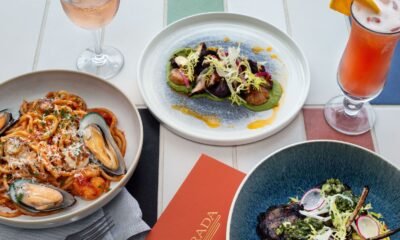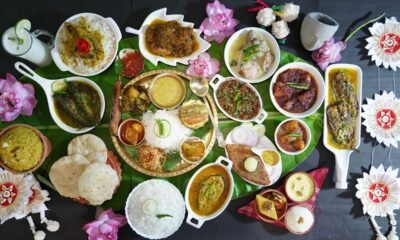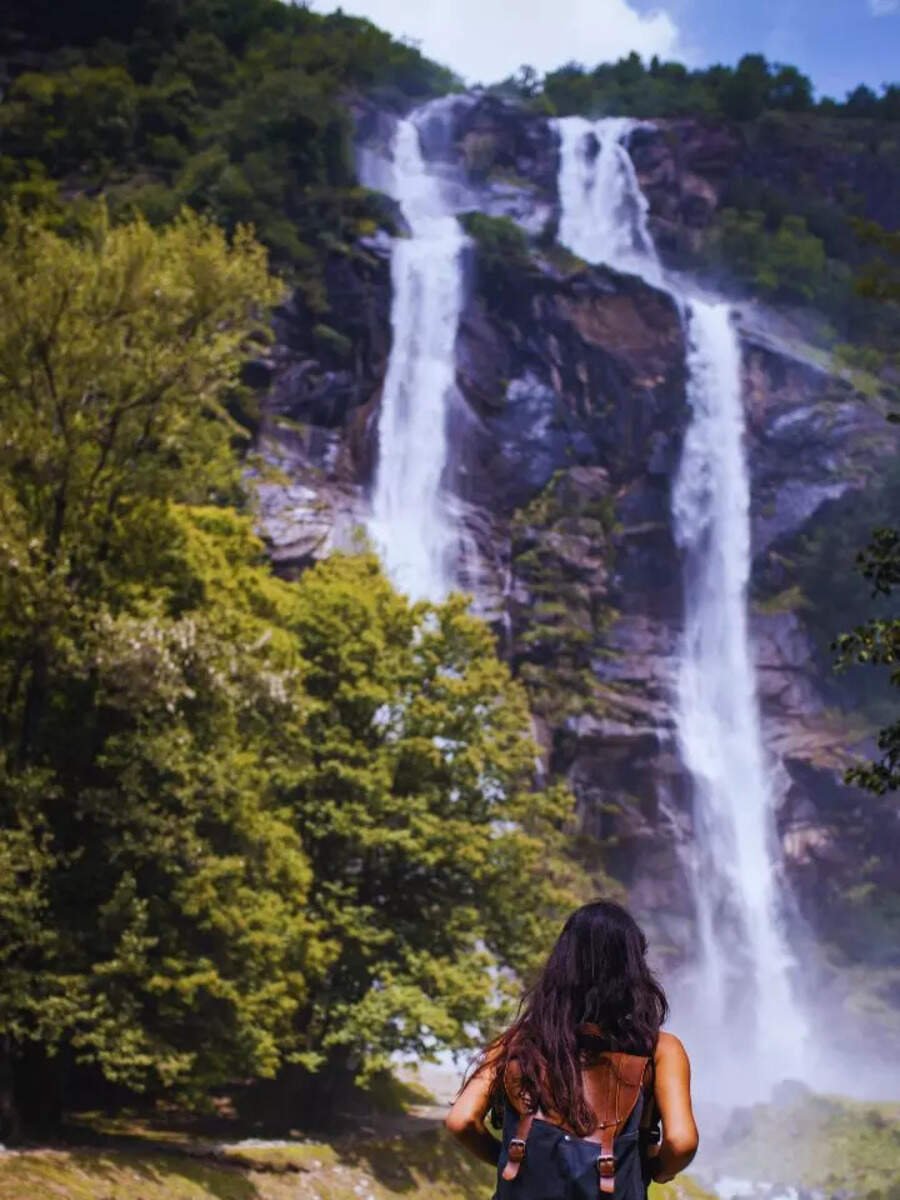Solo Travellers
Best Mexican Food in LA, From Mariscos Trucks to Barbacoa Pop-Ups and Shishi Restaurants

For the best Mexican food in LA, you won’t have to look far. Many refer to Los Angeles as Mexico’s second-largest city—it has the largest Mexican population in the United States, not to mention the second-largest in the world after the country’s capital of Mexico City. Suffice to say that, stateside, Los Angeles’ Mexican dining scene is second to none: Provincial restaurants offer the distinct cuisines of Oaxaca, Sinaloa, and Jalisco, while specialized loncheras, street stands, and backyard pop-ups serve hyper-regional tacos from Tijuana, Mazatlán, and Guerrero. And yes, there’s even an Enrique Olvera restaurant in the Arts District, proving that the height of Mexican gastronomy is also part of LA’s formidable banquet. From Boyle Heights to North Hollywood and the outer reaches of Monterey Park and Bell Gardens, these are the places locals go to get their fix. Whether they are en route to wherever you’re going or well out of the way, we promise—you won’t be disappointed. These 21 essential spots for the best Mexican food in Los Angeles showcase just how brightly the cuisine shines in the City of Angels.
Read our complete complete travel guide to Los Angeles here, which includes:
Boyle Heights
There is no other dish that’s more emblematic in Los Angeles that Raul Ortega’s taco de camarón, now imitated (but never replicated) by so many. Since 2002, Ortega’s white seafood truck on Olympic has shown off the mariscos (seafood) cuisine of the city San Juan de Los Lagos in Jalisco. The taco dorado de camarón is a deep fried shrimp taco drowned in a tart tomato and shredded cabbage salsa, then capped by a single slice of fresh avocado. The tuna ceviche is very nice, as is the very spicy yet sweet red aguachile tostada. But to leave here without a shrimp taco is to not have eaten in LA.
Del Rey, Inglewood
The original backyard mariscos restaurant started by Vicente Cossio in 1985 continues its legacy at his daughter Connie’s restaurant, with locations in Inglewood and Del Rey. Coni’Seafood is influenced by the botaneros (seafood huts) back home in Acaponeta, Nayarit. At the original location on Imperial Highway, the dining room sports an updated nautical theme, while the back patio is more homey. Nayarit seafood means lots of raw and cooked shrimp plates, such as spicy head-on shrimp aguachile and chopped ceviche de camarón, both made with Mexican mariscos. Camarones borrachos, a rich shrimp flambéed in tequila, is a delicious interlude before the main event: get the perfectly butterflied, grilled snook which arrives with corn tortillas and salsa.
Arts District
A dim lit, modern industrial dining room serves as a portal to a verdant patio setting under a retractable roof, with each aspect of this space reflecting chef Enrique Olvera’s cool, sophisticated, modern Mexican cuisine. The menu under the direction of chef-de-cuisine Chuy Cervantes draws from nearby Baja California, Sonora, and Yucatán to name a few. The heirloom corn huarache highlights the wonderful in-house nixtamal program, topped with local fried artichokes and Weiser potatoes, as does the grilled dry-aged branzino served with a spicy salsa and perfect corn tortillas to make tacos. Stay immersed in the terroir and pair it with a funky glass of Mexican pet-nat.
Damian also appears on our list of the best restaurants in Los Angeles.
Mid-City
Solo Travellers
Connecting with Locals: Respectful Cultural Interactions
Solo Travellers
Women who travel alone usually share these 7 subtle personality traits, according to psychology

Twilight in a new city always makes me honest. The night markets were just warming up when I stepped off the bus in Oaxaca last fall. My map app was out of battery.
My Spanish was rusty. And the only plan I had was a scribbled list that said “mole, textiles, say yes if it feels good.”
I remember pausing on the curb, tucked between a flower stall and a man tuning a guitar, and feeling that quiet click I’ve come to trust when I travel alone: not bravado, not a dare—just a steady, subtle readiness.
When you travel solo as a woman, people often assume you’re fearless.
I’m not. I just practice different muscles — small ones you only notice when things get unscripted.
Psychology has names for many of them.
Below are 7 of the most common traits I see (and keep building) in women who love their own company on the road.
None of these are fixed or exclusive to women. They’re skills you can stretch, one bus platform, one breakfast counter, one border crossing at a time.
1) Comfort with ambiguity
Solo travel is, by design, a little fuzzy around the edges.
You book a guesthouse with three reviews and a great balcony. You wander into a café where there’s no English menu and no one has time for your translator app. You get comfortable choosing without complete information.
Psychology calls this tolerance for ambiguity — the ability to function without distress when outcomes are uncertain.
The APA definition of “tolerance for ambiguity” captures that skill, and research on international adjustment suggests that learning to work with uncertainty is part of adapting to new environments.
On the road: it looks like trying the dish you can’t fully decode or switching plans when the museum is closed without letting it derail your mood.
Try this: give yourself one unpinned hour each day. Pick a direction and walk until one sensory cue—fresh bread, a courtyard laugh—invites you in. You’re not chasing risk; you’re practicing steadiness in the gray.
2) Autonomy as a default setting
When you travel with others, your calendar belongs to the group.
When you travel alone, your days answer by your energy.
That means leaving a festival early when your nervous system is done—or adding a second long, slow breakfast because the first one felt like medicine.
This lines up with self-determination theory, which says we thrive when our needs for autonomy, competence, and relatedness are met.
Designing your trip around what actually nourishes you (not what looks good in a recap) keeps motivation intrinsic and travel joyful.
On the road: you stop doing things just because “that’s what everyone does here.”
Try this: write a three-line “why this trip matters to me” note on your phone. When an invite comes that doesn’t match your why, say no with gratitude and keep moving.
3) Self-efficacy in motion
Some days, solo travel is a string of tiny logistics: buying the right bus ticket, swapping a SIM card, and ordering vegetarian food without sounding apologetic.
The more you do these micro-tasks, the more you trust yourself to handle the next round.
That trust has a name: self-efficacy—your belief that you can organize and execute the actions needed for a situation.
It threads into action through perceived behavioral control in the theory of planned behavior (Ajzen), which helps explain why feeling capable often precedes clicking “book.”
On the road: you’re the kind of person who reads a ticket kiosk once, then helps the person behind you.
Try this: rehearse one friction point before you leave. Watch a short video of your destination’s ticket machines. Practice ordering in the local language with a friend. Bank a win now to spend on confidence later.
4) Psychological flexibility
Trips wobble. Trains get canceled. A street you loved by day feels different at night.
Psychological flexibility — the capacity to pivot effectively while staying tethered to your values—helps you re-choose without spiraling.
A widely cited review argues that flexibility is a fundamental ingredient of mental health; it’s also central to Acceptance and Commitment Therapy’s model of change.
On the road: it’s swapping a late dinner for a bath and a book because your body says “enough,” and letting that be a success, not a failure.
Try this: build a “Plan B bank.” For each day, list two backups for eat / move / see. When the main plan slips, you’re not starting from zero—you’re choosing from a menu.
5) Quiet curiosity
You don’t have to network your way across a city to feel connected.
I’ve had afternoons changed by asking a market seller, “What herb is that?” or a museum guard, “If you had ten minutes, which room would you sit in?”
Curiosity opens doors—especially the small, human ones.
Psychologists distinguish flavors of curiosity. The Curiosity and Exploration Inventory-II (CEI-II) taps both the urge to stretch into newness and the ability to savor the moment.
When the interest is about people, interpersonal curiosity supports social connection in everyday encounters.
On the road: it’s five precise questions you bring to any barista, vendor, or ticket clerk.
Try this: keep those five on a note in your phone. Use them when your mind wants to retreat into your screen.
6) Boundary fluency (assertive ≠ abrasive)
Traveling alone means you negotiate a lot: vendors who press, strangers who linger, friends-of-friends who want your time. The goal isn’t to be “nice.”
It’s to be clear.
Assertiveness—stating your needs directly while respecting others—is linked to healthier communication and lower distress than either passivity or aggression.
If boundaries feel tricky, you’re not alone. Like any skill, this gets easier with rehearsal.
On the road: you decline firmly, redirect gracefully, and leave when vibes are off.
Try this: pre-script three lines in the local language: a polite no, a firm no, and a location change (“I’m leaving now / I’m meeting a friend”). Practice the tone, not just the words.
7) Positive solitude
Some of my best meals have been table-for-one with a notebook open, watching a neighborhood exhale.
Solitude isn’t a punishment — chosen well, it’s a refuel.
Work from self-determination theorists shows that autonomous, chosen solitude can regulate emotions and support well-being.
On the road: it’s a quiet dinner without reaching for your phone like a life raft.
Try this: schedule one “no-scroll meal” per day. Before you eat, write three sensory notes (sound, scent, texture). Let attention be the company.
Final thoughts
Back on that Oaxaca curb, a woman my mother’s age caught my eye.
She tilted her head toward the market, as if to say, “Are you coming?” I followed her into a corridor of light and fruit and smoke, bought dinner I couldn’t fully name, and shared a long bench with strangers.
I didn’t make a new best friend or have a profound epiphany. I just felt steady and awake, grateful to be exactly where I was.
That’s the secret, if there is one. Solo travel isn’t a personality test you either pass or fail.
It’s a set of quiet muscles—ambiguity tolerance, autonomy, self-efficacy, flexibility, curiosity, boundaries, and chosen solitude—that you grow trip by trip.
Pick one to practice on your next adventure. Make it small. Make it yours. The rest will come.
Solo Travellers
Top 10 safest countries for solo women travellers (WPS Report) – The Times of India
-

 Brand Stories3 weeks ago
Brand Stories3 weeks agoBloom Hotels: A Modern Vision of Hospitality Redefining Travel
-

 Brand Stories2 weeks ago
Brand Stories2 weeks agoCheQin.ai sets a new standard for hotel booking with its AI capabilities: empowering travellers to bargain, choose the best, and book with clarity.
-

 Destinations & Things To Do3 weeks ago
Destinations & Things To Do3 weeks agoUntouched Destinations: Stunning Hidden Gems You Must Visit
-

 Destinations & Things To Do2 weeks ago
Destinations & Things To Do2 weeks agoThis Hidden Beach in India Glows at Night-But Only in One Secret Season
-

 AI in Travel3 weeks ago
AI in Travel3 weeks agoAI Travel Revolution: Must-Have Guide to the Best Experience
-

 Brand Stories1 month ago
Brand Stories1 month agoVoice AI Startup ElevenLabs Plans to Add Hubs Around the World
-

 Brand Stories3 weeks ago
Brand Stories3 weeks agoContactless Hospitality: Why Remote Management Technology Is Key to Seamless Guest Experiences
-

 Brand Stories1 month ago
Brand Stories1 month agoHow Elon Musk’s rogue Grok chatbot became a cautionary AI tale
-

 Asia Travel Pulse1 month ago
Asia Travel Pulse1 month agoLooking For Adventure In Asia? Here Are 7 Epic Destinations You Need To Experience At Least Once – Zee News
-

 AI in Travel1 month ago
AI in Travel1 month ago‘Will AI take my job?’ A trip to a Beijing fortune-telling bar to see what lies ahead | China















You must be logged in to post a comment Login